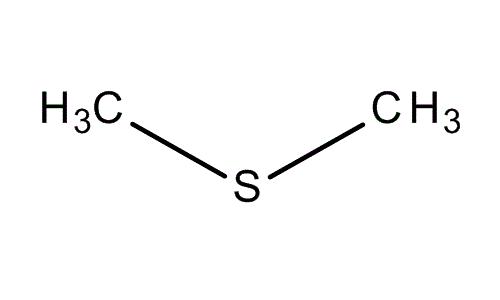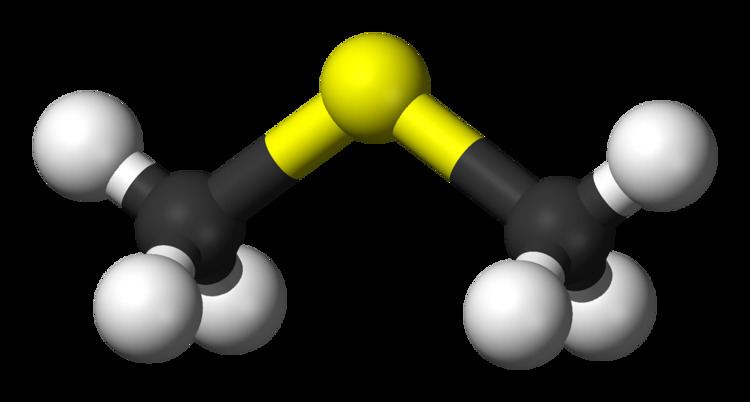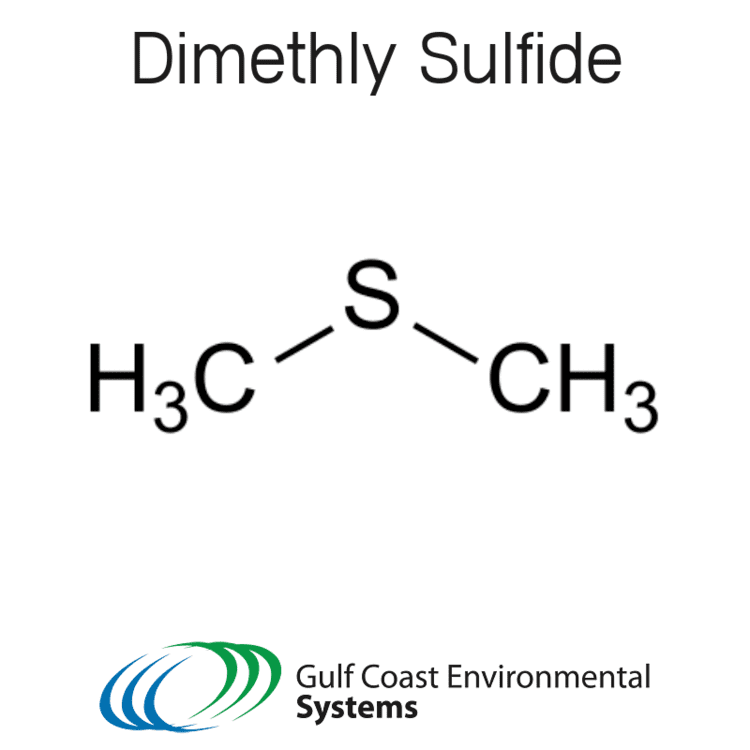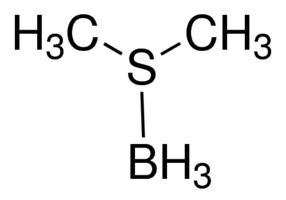3DMet B00138 Boiling point 37.34 °C Appearance Colourless liquid | Formula C2H6S Density 840 kg/m³ | |
 | ||
Related compounds | ||
DMSO (Dimethyl Sulfoxide)
Dimethyl sulfide (DMS) or methylthiomethane is an organosulfur compound with the formula (CH3)2S. Dimethyl sulfide is a water-insoluble flammable liquid that boils at 37 °C (99 °F) and has a characteristic disagreeable odor. It is a component of the smell produced from cooking of certain vegetables, notably maize, cabbage, beetroot and seafoods. It is also an indication of bacterial contamination in malt production and brewing. It is a breakdown product of dimethylsulfoniopropionate (DMSP), and is also produced by the bacterial metabolism of methanethiol.
Contents
- DMSO Dimethyl Sulfoxide
- Natural occurrence
- Physiology of dimethyl sulfide
- Smell
- Preparation
- Industrial uses
- Other uses
- Safety
- References

Natural occurrence

DMS originates primarily from DMSP, a major secondary metabolite in some marine algae. DMS is the most abundant biological sulfur compound emitted to the atmosphere. Emission occurs over the oceans by phytoplankton. DMS is also produced naturally by bacterial transformation of dimethyl sulfoxide (DMSO) waste that is disposed of into sewers, where it can cause environmental Odor problems.

DMS is oxidized in the marine atmosphere to various sulfur-containing compounds, such as sulfur dioxide, dimethyl sulfoxide (DMSO), dimethyl sulfone, methanesulfonic acid and sulfuric acid. Among these compounds, sulfuric acid has the potential to create new aerosols which act as cloud condensation nuclei. Through this interaction with cloud formation, the massive production of atmospheric DMS over the oceans may have a significant impact on the Earth's climate. The CLAW hypothesis suggests that in this manner DMS may play a role in planetary homeostasis.

Marine phytoplankton also produce dimethyl sulfide, and DMS is also produced by bacterial cleavage of extracellular DMSP. DMS has been characterized as the "smell of the sea", though it would be more accurate to say that DMS is a component of the smell of the sea, others being chemical derivatives of DMS, such as oxides, and yet others being algal pheromones such as dictyopterenes.

Dimethyl sulfide also is an odorant emitted by kraft pulping mills, and it is a byproduct of Swern oxidation.

Dimethyl sulfide, dimethyl disulfide, and dimethyl trisulfide have been found among the volatiles given off by the fly-attracting plant known as dead-horse arum (Helicodiceros muscivorus). Those compounds are components of an odor like rotting meat, which attracts various pollinators that feed on carrion, such as many species of flies.
Physiology of dimethyl sulfide

Dimethyl sulfide is normally present at very low levels in healthy people, namely < 7nM in blood, < 3 nM in urine and 0.13 – 0.65 nM on expired breath.

At pathologically dangerous concentrations, this is known as dimethylsulfidemia. This condition is associated with blood borne halitosis and dimethylsulfiduria.
Smell
Dimethyl sulfide has a characteristic smell commonly described as cabbage-like. It becomes highly disagreeable at even quite low concentrations. Some reports claim that DMS has a low olfactory threshold that varies from 0.02 to 0.1 ppm between different persons, but it has been suggested that the odor attributed to dimethyl sulfide may in fact be due to di- and polysulfides and thiol impurities, since the odor of dimethyl sulfide is much less disagreeable after it is freshly washed with saturated aqueous mercuric chloride. Dimethyl sulfide is also available as a food additive to impart a savory flavor; in such use, its concentration is low. Beetroot, asparagus, cabbage, corn and seafoods produce dimethyl sulfide when cooked.
Preparation
In industry dimethyl sulfide is produced by treating hydrogen sulfide with excess methanol over an aluminium oxide catalyst.
Industrial uses
Dimethyl sulfide has been used in petroleum refining to pre-sulfide hydrodesulfurization catalysts, although other disulfides or polysulfides are preferred and easier to handle. It is used as a presulfiding agent to control the formation of coke and carbon monoxide in ethylene production. DMS is also used in a range of organic syntheses, including as a reducing agent in ozonolysis reactions. It also has a use as a food flavoring component. It can also be oxidized to dimethyl sulfoxide, (DMSO), which is an important industrial solvent.
The largest single commercial producer of DMS in the world is Gaylord Chemical Corporation, which until mid-2010 was a significant economic component of the paper industry of Bogalusa, Louisiana. The Bogalusa DMS plant operated continuously until this date, since its startup in 1961 by the now defunct Crown Zellerbach Corporation. The process technology practiced at the Bogalusa plant (alkylation of sulfur using Kraft lignin) is no longer in operation anywhere in the world. All DMS manufacturers currently use hydrocarbon-based feedstocks. Gaylord has no production of any kind at the old Louisiana site after opening its expanded DMS / Dimethyl sulfoxide operation in Tuscaloosa, Alabama in 2010.
ChevronPhillips Chemical Company is another major manufacturer of DMS. CP Chem produces this material at their facilities in Borger, Texas, USA and Tessenderlo, Belgium.
Other uses
Dimethyl sulfide finds a niche use as a displaceable ligand in chloro(dimethyl sulfide)gold(I) and other coordination compounds. Dimethyl sulfide is also used in the ozonolysis of alkenes, reducing the intermediate trioxolane and oxidizing to DMSO.
alkene + ozone + DMS → aldehyde(1) + aldehyde(2) + DMSO
Safety
Dimethyl sulfide is highly flammable and irritant to eyes and skin. It is harmful if swallowed and has an unpleasant odor at even extremely low concentrations. Its ignition temperature is 205 °C.
